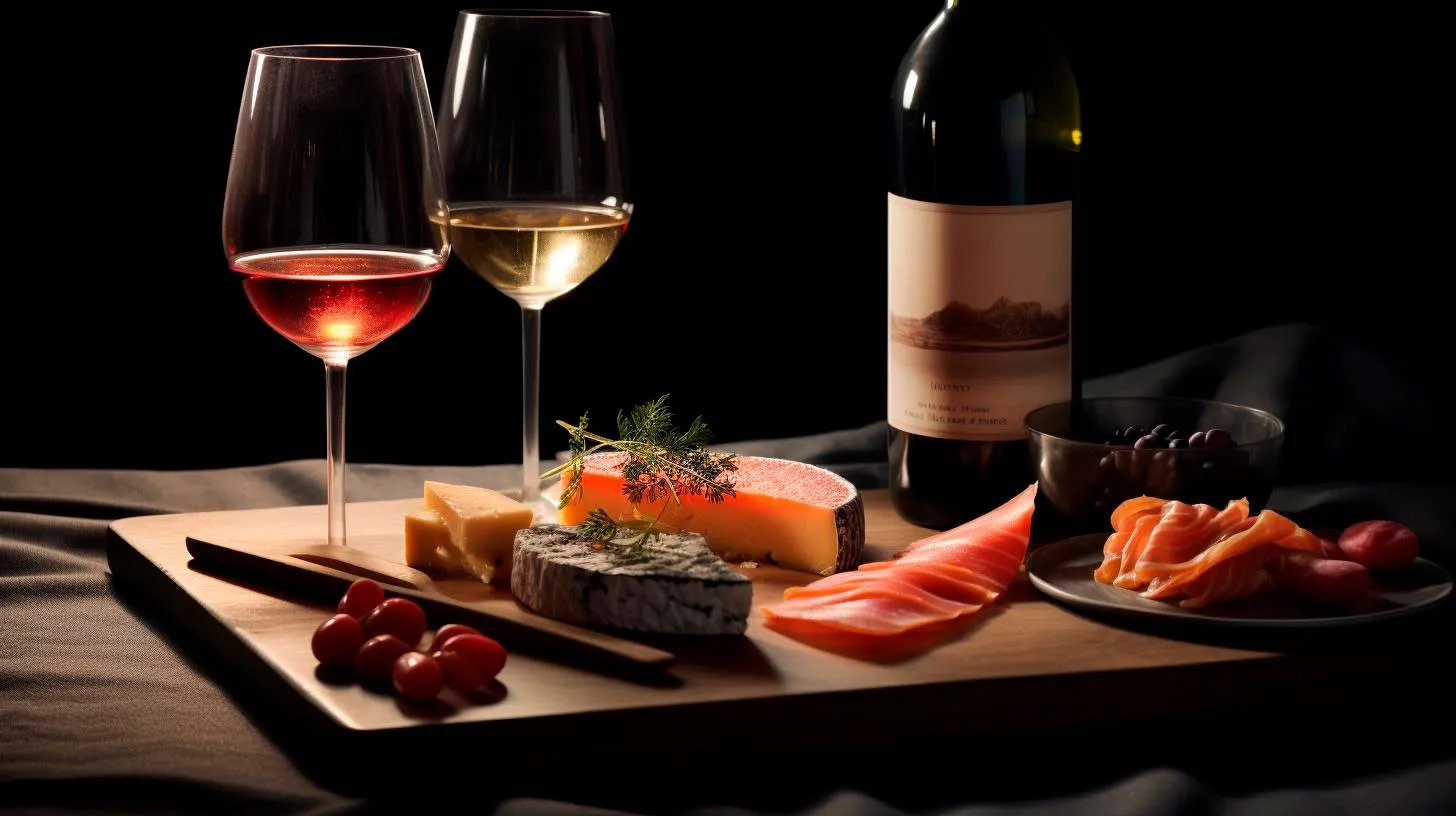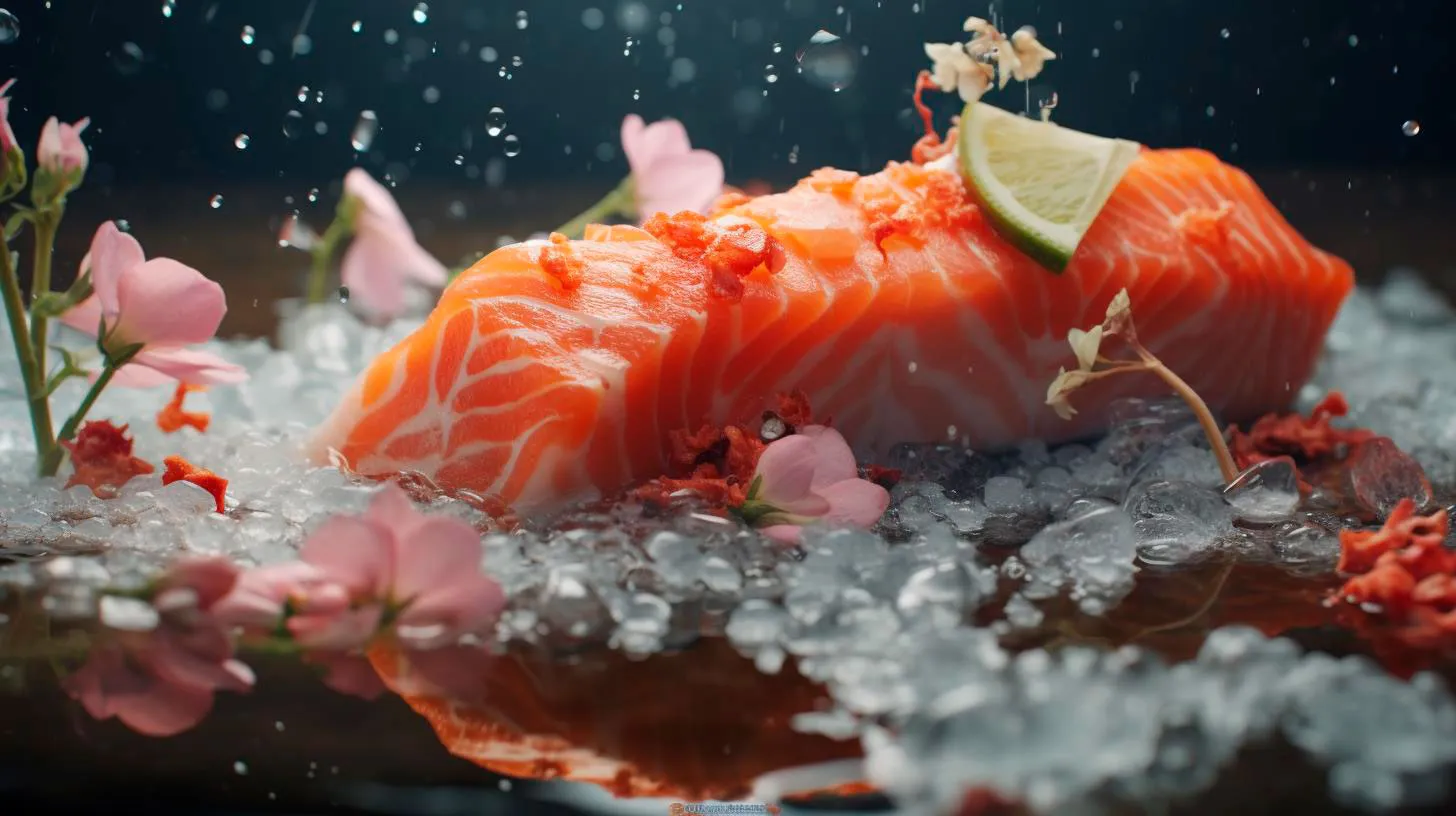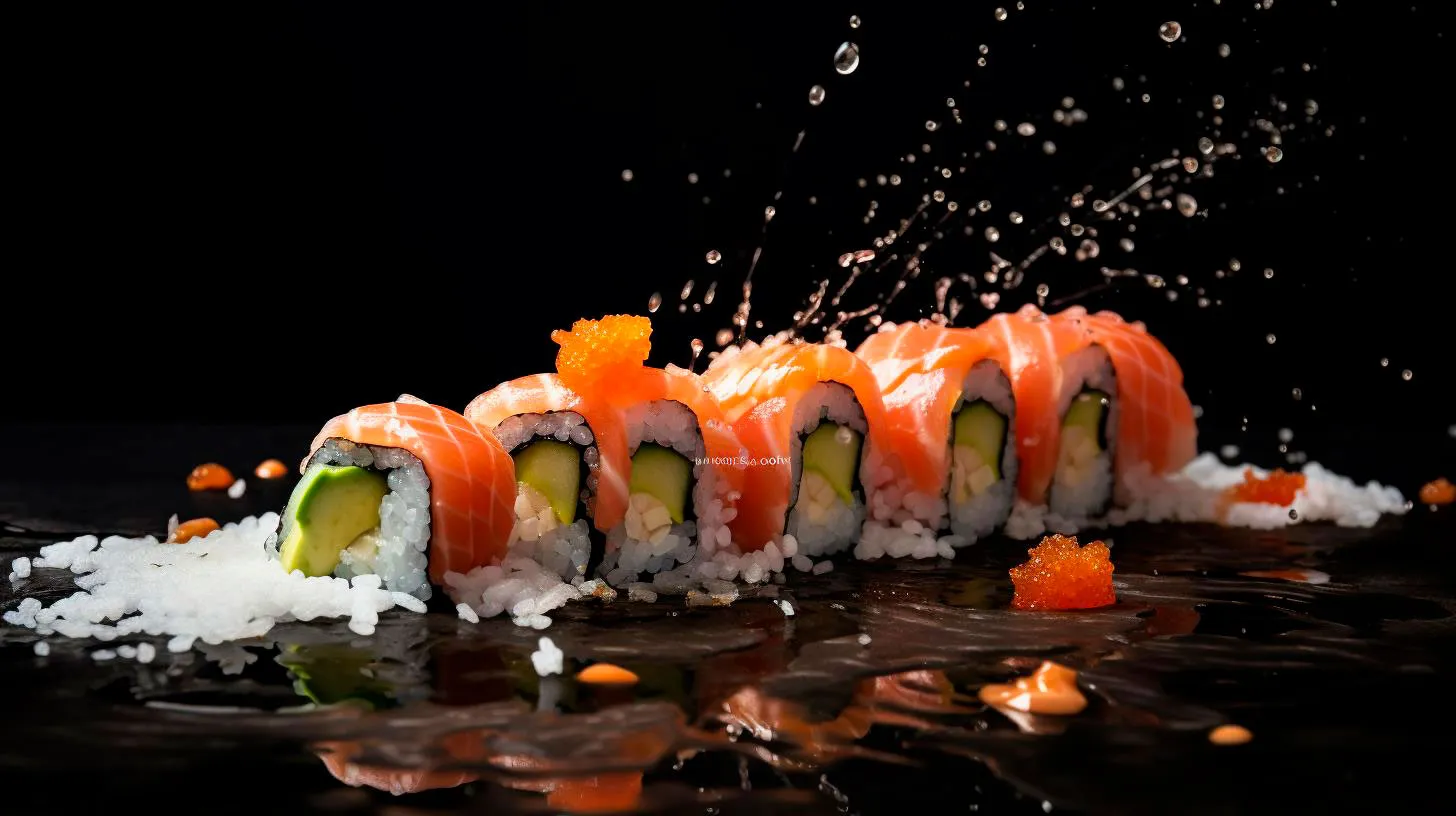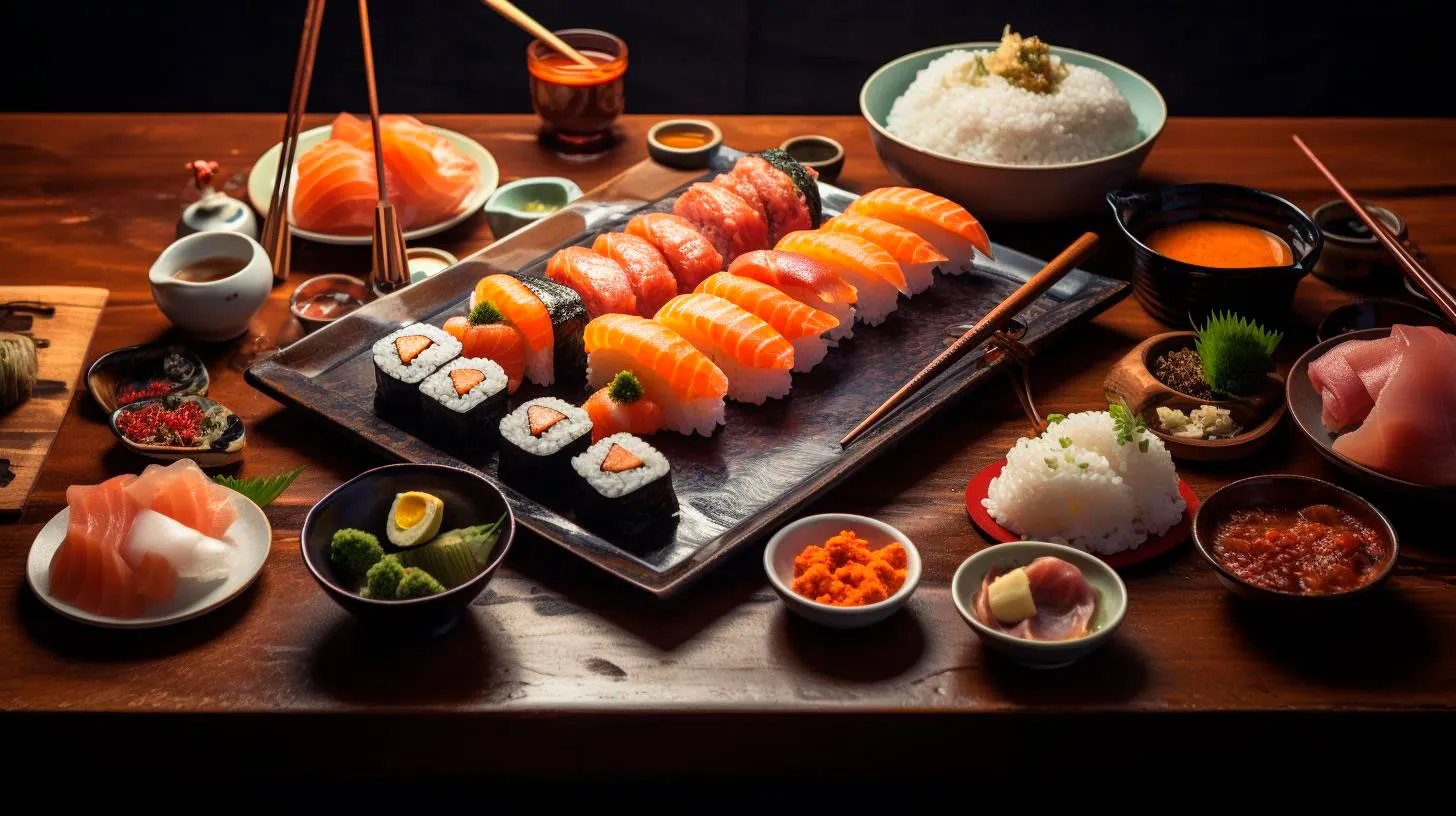Going Beyond the Blade: Exploring the Visual Mastery of Sushi Chefs
Each piece of sushi is meticulously crafted to be not only delicious but also visually appealing, elevating the entire dining experience to an art form. In this article, we will dive into the world of sushi aesthetics and unravel the secret behind the awe-inspiring visuals presented by these skillful artisans.
Artistry on a Plate
Sushi is not only about assembling fresh ingredients together. It is an art that requires years of practice, dedication, and an unwavering attention to detail. Every sushi chef strives to create a masterpiece on a plate, utilizing their skills in precise cutting, shaping, and arranging the ingredients. From the selection of the highest quality fish to the careful seasoning of the rice, each step plays a crucial role in achieving the desired visual harmony. The result is a visually stunning creation that ignites the senses.
The following are key takeaways that highlight the artistry of sushi chefs:
- Impeccable knife skills: Sushi chefs spend years perfecting their blade skills, allowing them to create precise and clean cuts. This not only enhances the visual appeal of the sushi but also ensures an ideal texture and flavor balance.
- Attention to color and texture: Sushi chefs carefully consider the colors and textures of different ingredients, combining them in a way that is visually pleasing. This attention to detail creates a visually dynamic and appealing sushi presentation.
- Masterful presentation techniques: From the arrangement of the ingredients to the placement on the plate, sushi chefs utilize various techniques to create visually striking compositions. The use of garnishes, edible flowers, and sauces further enhances the overall presentation.
The Importance of Visual Appeal
In the world of sushi, visual presentation goes hand in hand with taste. The visual appeal of a sushi dish can greatly influence the perception of its flavor and quality. A visually stunning presentation has the power to elevate an already delicious dish to new heights, creating a memorable dining experience. As humans, we are instinctually drawn to appealing visuals, and sushi chefs understand and capitalize on this innate preference.
Consider these remarkable statistics that highlight the importance of visual appeal:
- According to a study by Cornell University, attractive food presentation increases the diners’ expectation regarding the taste and enjoyment of a dish.
- In a survey by the National Restaurant Association, 70% of diners indicated that the visual presentation of a dish is an important factor in their decision-making process.
- A report by Technomic revealed that visually appealing food items have been shown to increase purchase intent by up to 30%.
For sushi chefs, understanding the significance of visual appeal is essential in creating an outstanding dining experience.
Unleashing the Creativity
One of the most fascinating aspects of sushi is the way chefs are encouraged to think outside the box and push their creative boundaries. Sushi chefs embrace innovation and experiment with a wide variety of ingredients, flavors, and techniques to create distinct and visually captivating sushi rolls. From the intricate designs resembling works of art to the playful use of colors and patterns, sushi chefs are constantly searching for new ways to surprise and delight their customers.
Here are some of the key features and advantages of sushi chefs’ creativity:
- Fusion of flavors: Sushi chefs often combine ingredients from different culinary traditions to create unique flavor profiles. This fusion of flavors adds complexity and depth to the visual and gastronomic experience.
- Seasonal inspirations: Sushi chefs draw inspiration from the seasons and incorporate seasonal ingredients in their creations. This not only adds freshness but also allows for visually appealing variations throughout the year.
- Personalized customer experience: Sushi chefs take into consideration individual preferences and dietary restrictions, creating customized sushi rolls that cater to their customers’ unique tastes. This personal touch enhances the overall dining experience.
Sushi chefs are constantly pushing the boundaries of culinary creativity, resulting in an endless array of visually stunning and flavorful creations.
In Conclusion
Next time you indulge in a plate of sushi, take a moment to appreciate the artistry and dedication behind each visually stunning piece. Sushi chefs are not just cooks; they are talented artists who strive to create harmonious and visually captivating masterpieces. With their impeccable knife skills, attention to detail, and boundless creativity, sushi chefs elevate the dining experience and leave a lasting impression. So, savor each bite and immerse yourself in the extraordinary world of visual mastery presented by sushi chefs.
The Artistry Behind Sushi: A Glimpse into the Mastery of Sushi Chefs
In this article, we will delve into the world of sushi chefs and explore the fascinating art behind their craft.
The Journey of a Sushi Chef
Becoming a sushi chef is no easy feat. It takes years of practice, dedication, and a deep understanding of the ingredients and techniques involved. Let’s take a look at the journey these chefs embark upon:
- Apprenticeship: Aspiring sushi chefs typically start as apprentices, working under the guidance of a master chef. This apprenticeship period can last anywhere from three to ten years, during which the trainees learn the art of sushi-making from scratch.
- Rice Mastery: The foundation of sushi lies in the rice. Sushi chefs spend considerable time perfecting the art of cooking rice and flavoring it with the right balance of vinegar, salt, and sugar. Achieving the ideal texture and flavor of sushi rice is of utmost importance.
- Knife Skills: Sushi chefs are known for their exceptional knife skills. They spend years honing their technique to slice fish, seafood, and vegetables with precision and finesse. A single stroke of the knife can make or break the taste and texture of the sushi.
- Seafood Selection: Sourcing the freshest seafood is crucial in sushi-making. Sushi chefs develop relationships with trusted suppliers to ensure they have access to high-quality fish and shellfish. The ability to choose the best ingredients is vital in creating exceptional sushi.
- Art of Presentation: The visual appeal of sushi is as important as its taste. Sushi chefs learn the art of traditional plating, arranging sushi pieces on the plate in an aesthetically pleasing manner. Every plate of sushi is a work of art, showcasing the chef’s creativity and attention to detail.
The Significance of Tradition
Tradition plays a vital role in sushi-making. Passed down through generations, sushi chefs honor age-old techniques and recipes, while also incorporating their personal touch. The following are the key aspects of tradition in sushi:
- Omotenashi: Sushi chefs embrace the concept of omotenashi, which refers to the spirit of hospitality. They strive to provide guests with an unforgettable dining experience, paying meticulous attention to every detail, from the ambiance to the presentation of the food.
- Seasonality: Traditional sushi places great emphasis on seasonality. Chefs carefully select ingredients that are in season to ensure the best flavors and textures. This commitment to using fresh, seasonal produce elevates the dining experience.
- Respecting Ingredients: Sushi chefs have deep respect for the ingredients they work with. They believe in using sustainable seafood and preserving the natural flavors of the ingredients, allowing them to shine in every bite.
The Magic of Sushi: Key Takeaways
So, what makes sushi so special? Here are some key takeaways to help you appreciate the artistry behind sushi:
- Precision and Skill: Sushi-making requires precision and technical expertise. From the knife cuts to the rice texture, every element is meticulously crafted to deliver a memorable dining experience.
- Visual Presentation: The beauty of sushi lies in its presentation. Sushi chefs create visually appealing platters that are truly Instagram-worthy, showcasing their artistry and attention to detail.
- Harmony of Flavors: Sushi is a delicate balance of flavors. The combination of fresh fish, rice, and umami-rich ingredients results in a harmonious explosion of taste in every bite.
- Cultural Significance: Sushi is deeply rooted in Japanese culture and traditions. It represents the values of respect, discipline, and attention to detail that are highly regarded in Japanese society.
In conclusion, sushi-making is an art form that requires years of dedication and practice. Sushi chefs’ mastery in rice preparation, knife skills, ingredient selection, and presentation allows them to create flavor-packed morsels of perfection. Next time you savor a sushi roll, take a moment to appreciate the incredible artistry behind it.
From Ordinary to Extraordinary: Unveiling the Skillful Techniques of Sushi Chefs
In this article, we delve into the world of sushi chefs, exploring the techniques that elevate their creations from ordinary to extraordinary. Join us on this culinary journey as we unravel the secrets of sushi craftsmanship.
The Art of Sushi-Making
Sushi is much more than a mere meal. It is an art form that has captivated food enthusiasts worldwide for centuries. But what sets sushi apart from other dishes is the meticulous craftsmanship behind it. Sushi chefs, also known as Itamae, undergo years of rigorous training to refine their skills. Let’s take a closer look at some of the techniques they employ:
1. Knife Skills
A sushi chef’s most essential tool is their knife. Japanese knives are renowned for their sharpness and precision, enabling chefs to masterfully slice through delicate ingredients with ease. Each cut is calculated and executed with impeccable precision, resulting in perfectly shaped sushi pieces that are not only visually appealing but also ensure a harmonious balance of flavors.
2. Rice Perfection
While many may focus on the fish or other toppings, the rice is the foundation of any sushi dish. Sushi chefs pay great attention to detail when preparing the sushi rice, using a specific type of rice grain, vinegar, and other essential ingredients. The rice is seasoned to perfection, striking a delicate balance between flavor, texture, and stickiness, which complements the various toppings.
3. Freshness is Key
The quality of the seafood used in sushi is of utmost importance. Sushi chefs meticulously select the freshest, highest-quality fish and ingredients to ensure an extraordinary sushi experience. The fish’s freshness not only enhances the flavor but also guarantees food safety for customers. To maintain this freshness, sushi chefs often establish direct relationships with trusted suppliers.
4. Handcrafted Perfection
One distinguishing characteristic of sushi is the attention given to its presentation. Sushi chefs handcraft each piece with care and precision, making sure they are not only visually appealing but also pleasing to the palate. Each sushi roll is meticulously shaped and garnished, highlighting the chef’s creativity and flair.
The Advantages of Skillful Sushi Techniques
The skillful techniques employed by sushi chefs serve several advantages that greatly enhance the overall dining experience. Let’s explore some of these advantages:
- Enhanced Flavor: The precise cutting techniques employed by sushi chefs help to accentuate the flavors of the various ingredients. Each slice is carefully crafted to maximize taste and texture.
- Visual Appeal: Aesthetics play a significant role in Japanese cuisine, and sushi is no exception. The artful presentation of sushi enhances the dining experience, making it visually enticing and memorable.
- Freshness Guaranteed: Sushi chefs’ meticulous attention to ingredient quality ensures that customers enjoy the freshest seafood available. This commitment to freshness guarantees a safe and enjoyable culinary experience.
- Customization: Sushi chefs are masters of customization. They can adapt their techniques to accommodate various dietary preferences or restrictions, catering to a wide range of customers.
Key Takeaways
Unveiling the skillful techniques of sushi chefs not only offers a glimpse into their craftsmanship but also deepens our appreciation for this ancient culinary art form. Let’s recap the key takeaways from our culinary exploration:
- The art of sushi-making requires years of training and mastery of various techniques.
- Precision knife skills, perfecting the rice, and choosing fresh ingredients are crucial pillars of sushi craftsmanship.
- The advantages of skillful sushi techniques include enhanced flavor, visual appeal, freshness guarantees, and customization options.
So the next time you indulge in a plate of beautifully crafted sushi, take a moment to appreciate the remarkable skills and techniques that have transformed this ancient cuisine into an extraordinary culinary experience.
Delicate Precision: Discovering the Visual Techniques that Define Sushi Chefs
The Art of Sushi Presentation
When it comes to sushi, presentation is as vital as taste. Sushi chefs go beyond just creating a delicious dish; they transform it into a stunning visual masterpiece. Delicate and precise techniques are used to create visually pleasing arrangements that enhance the dining experience. Let’s explore some of the visual techniques that define sushi chefs:
1. Color Composition
Color plays a crucial role in the art of sushi-making. Sushi chefs carefully select ingredients with vibrant colors, such as fresh fish, vegetables, and even edible flowers, to create visually appealing arrangements. By incorporating a variety of colors, they not only make the dish visually enticing but also enhance the flavors and textures.
2. Knife Skills
A sushi chef’s knife skills are a testament to their expertise. With exceptional precision and dexterity, they skillfully slice the fish, taking into account the cut’s thickness and angle. Each piece is meticulously shaped to ensure consistency and balance in the final presentation.
3. Garnishes and Plating Techniques
Garnishes and plating techniques are another aspect that sets sushi chefs apart. They use an array of garnishes, such as daikon radish, microgreens, and sesame seeds, to add texture, color, and flavor to the dish. Sushi chefs also excel in arranging these garnishes in an aesthetically appealing manner, creating an elevated dining experience.
The Significance of Visual Techniques in Sushi
The visual techniques employed by sushi chefs are not just for aesthetic purposes; they significantly impact the overall dining experience. Here are some key advantages and takeaways to consider:
- Enhanced Aesthetics: The artful presentation of sushi adds another dimension to the dining experience, making it visually pleasing and memorable.
- Improved Textures and Flavors: Through careful presentation techniques, sushi chefs enhance the textures and flavors of the ingredients, creating a harmonious blend.
- Attention to Detail: Sushi chefs’ precision and attention to detail demonstrate their dedication to their craft and ensure consistency in quality.
- Unique Culinary Experience: By utilizing visual techniques, sushi chefs offer diners a unique and immersive culinary journey that goes beyond the taste of the food itself.
Statistics Reflecting the Importance of Visual Techniques in Sushi
If you still doubt the significance of visual techniques in sushi, let these statistics convince you:
- A survey conducted by SushiSushi revealed that 95% of customers felt that the presentation of sushi influenced their perception of its taste and overall quality.
- In a study published in the Journal of Sensory Studies, it was found that the visual presentation of food significantly influenced taste perception, with sushi being one of the most visually impactful dishes.
- According to a report by Forbes, Instagram’s popularity has led to an increase in customers seeking visually appealing dishes like sushi, resulting in a rise in sushi restaurants worldwide.
Conclusion
The visual techniques employed by sushi chefs go beyond mere presentation. They elevate sushi to a form of edible art, creating an unforgettable dining experience. From the careful composition of colors to the precise knife skills and artful plating, sushi chefs uphold a level of delicate precision that makes their craft truly outstanding.
Next time you savor a sushi roll, take a moment to appreciate the visually stunning masterpiece in front of you. It is the result of the unwavering dedication and expertise of sushi chefs who bring their art to life on your plate.



